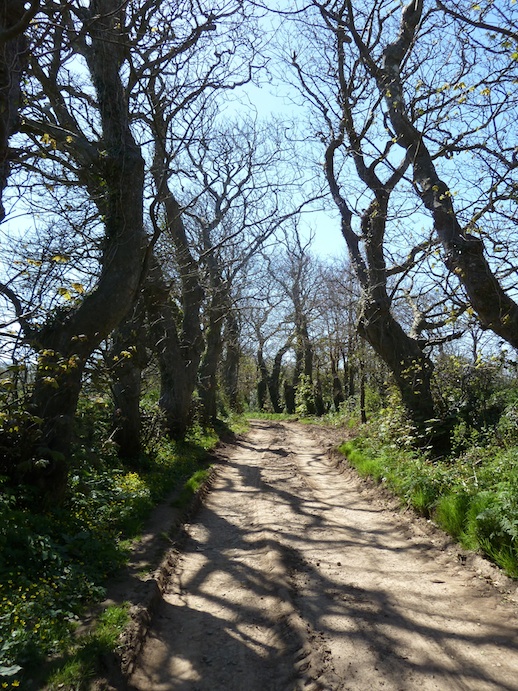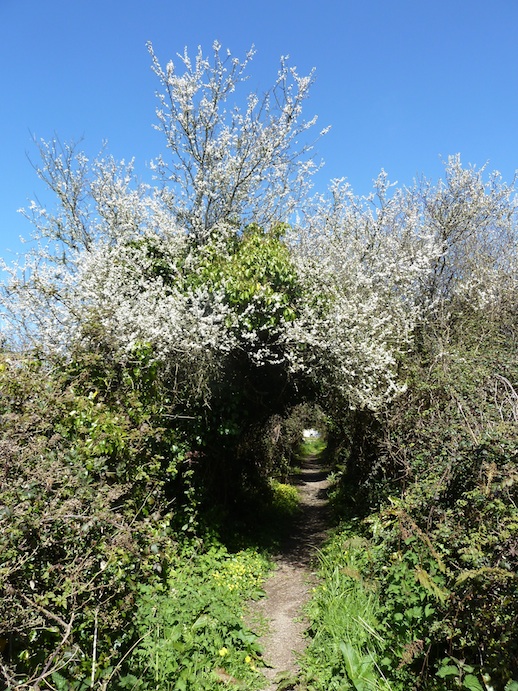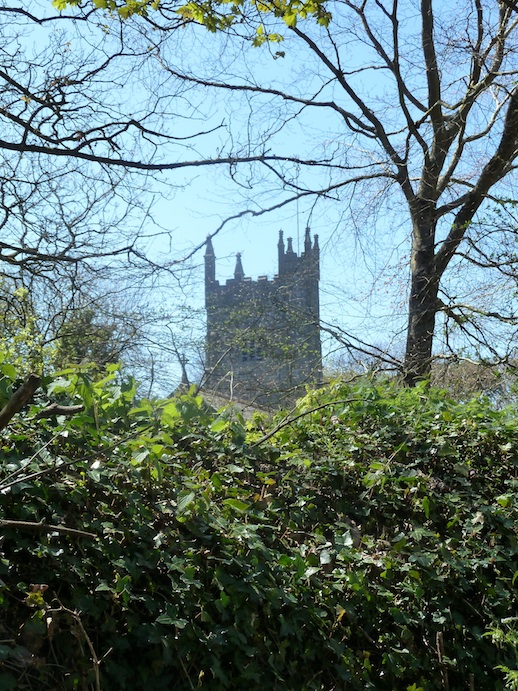An in-land walk on the Penwith peninsula. Words and pictures: Chris Sawle.
Everyone, I would wager, has a default route to walk; time-honoured, one on which to measure out the wider passage of time and to walk out any problems, however fleeting or in hindsight, trivial. Or during which to move forward from a darkest season by perhaps, the aerobic simplicity of, well, moving forward.
I live in the far west of Cornwall, and my true playground is to all intents and purposes entirely quotidian: not for me the nearby coast – just over two miles in one direction, and far less than ten in another – the nettle and gorse-biting interior, thick with paths under-ventured and under-imagined, is where I roam.
So I set off from my off-coast town, and decide on a route almost parallel to the north coast but about three miles back into the gorse pastureland; the Atlantic today, a painter’s smear on the mid-ground.
The first village I passed through was Penponds, straggling west from its Victorian crossroads centre into the valley of the River Connor, 60s’ dream homes giving way to bracken-fringed paddocks.
Here, on Mill Lane, I stopped at a ‘shoot’ – a point where near-rising spring water is channeled into a roadside pool. These ‘shoots’ were, and occasionally still are, a good source of drinking water if you’re out and about – and more importantly, in the know. My father had taught me every such spring in a radius of four miles or so – many gone, many locked and gated, some soured. But, wearing grief lightly on my shoulders, I stooped, cupped, slurped, and drank in his memory, and recalled walks more than 30 years ago, slaking at this very point on one of those rosy, pre-teen summer evenings, when I was budding and he was strong.
Out of the shallow valley, I swiftly crossed some high pastures west to pick up the complex of weaving tracks that constitute Polmenor Downs. Everything in the hedgerows and field edges was out, flowering suddenly, drinking in the sun: bluebells, campion, stitchwort, alexanders, speedwell, celandine, ground ivy, pineapple weed. Where even two weeks hence the greenery was lackadaisical, tired-looking, today the plant life was lush, unfurling, competing for space and putting on a show.
Past the hidden 17th-century grand farm at Lanyon, my midway point came at Gwinear Churchtown. St Gwinear as hagiography would have it, was martyred on reaching on the shore at nearby Hayle. Not the best start to a Cornish break.
Unlike some Cornish villages, Gwinear Parish Church has a village in its lee – a ‘churchtown’, often where the better real estate could be found, with the vicarage and the grander piles. The humbler Cornish farmers, miners, smiths, often lived in smaller settlements away from the seat of the money and the divine, with chapels for their plainer wrought spiritual needs. Still elsewhere in Kernow to this day can be found medieval churches ministering, in the adjacent area, to seemingly no one: Advent, Michaelstow and Grade-Ruan being prime examples, their old stones rising proud from the surrounding fields, but with nary a cottage in sight.
And indeed Gwinear’s surrounding hamlets within the parish incant their own poetry: Wall, Reawla, Relistian, Bezurrel, Drannack.
I left the village after a brief poke around the recently cleared Victorian graveyard, which dates from the area’s copper extraction boom 150 years ago, and wherein the gravestones still lurch and yaw although the smothering sward of hogweed has been cut back, by way of Drannack Lane: a little used rocky byway, more granite-grey than green lane, which begins its journey through a farmyard, but quickly asserts itself as a fine old mine track, running along the valley brow with views downstream to the railway viaduct at Angarrack and the sandy dunes (or, locally, ‘towans’) along the coast beyond. It dips heavily as it leaves the rocky despoliation of mine tips, still being picked over and still largely uncolonised by greenery; it bottoms out steeply as it passes through the des-res that Drannack Mill has become, all showy roses and warning barks.
And here, reiterating my route, I notice for the first time on my dog-eared Explorer sheet, grot-whorled from muddy fingered unfurling, a short and alternative cut-through, the slightest variant on which to duck under the dual carriageway on Bar Lane, one of the few older paths and tracks not suddenly truncated by the mid-80s slice of car channeling.
And short those it was, it had that Penwithian nature of managing to pack an awful lot into a small passage, with the discovery of a natural tunnel of hawthorn finally fully in May bloom framing my steps.
Bar Lane brought me quickly over the brow, with the view of the sandbar on the Hayle River some four miles out toward St Ives, and that rough, dusty farm track smartened itself up for public consumption, picked up surfacing and quickly decanted me into central Hayle. But here, my first butterfly of the season, a peacock.
And I stretched as my seven-mile meander concluded, with the exhilaration of spent energy and thought, a swift cider perhaps to come; the winter done – well, almost, as I realised this was to be a walk with one new part-route which I would never have chance to recount to my father, nor to be met with his customary, deep burr of assent.


